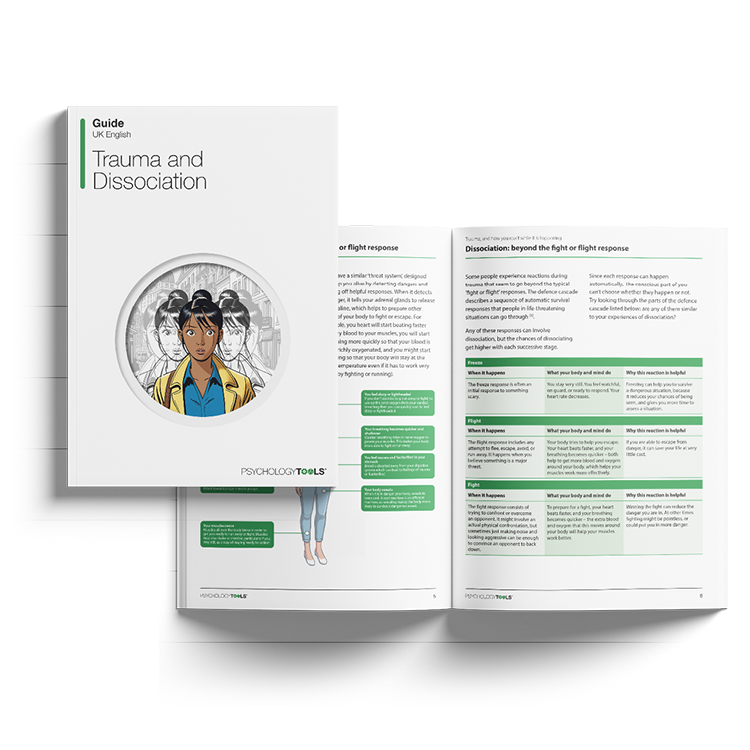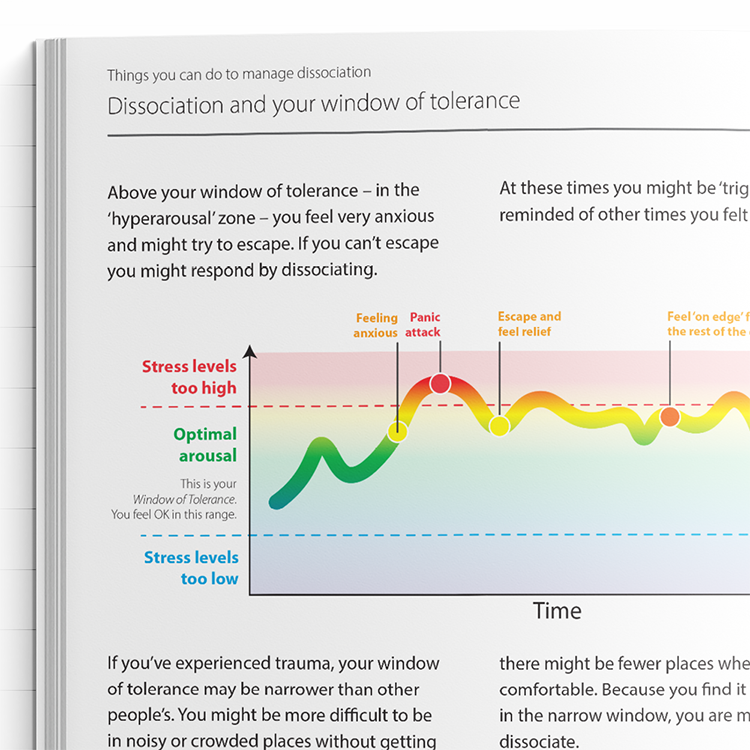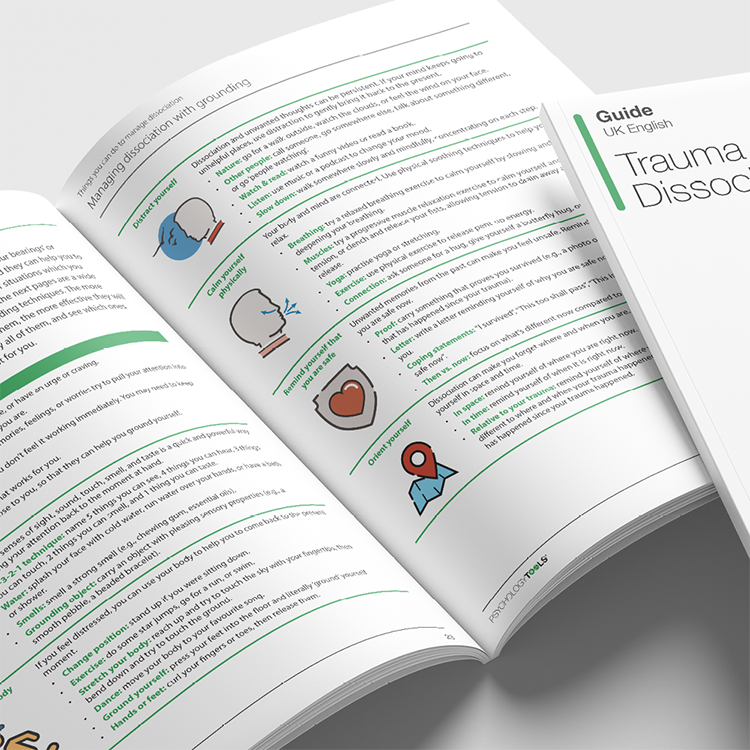Workbook (PDF)
A workbook containing elements of psychoeducation and skills-development.
This guide explores trauma and dissociation, providing survivors of trauma with information, tools, and strategies for managing dissociative symptoms.

A workbook containing elements of psychoeducation and skills-development.
To use this feature you must be signed in to an active account on the Advanced or Complete plans.

Traumatic experiences can result in dissociation, a survival response that can manifest as a feeling detached or numb, having flashbacks, or experiencing unwanted memories. This guide illuminates the mechanisms of dissociation experienced during and after trauma, and offers practical strategies to help clients to address these responses.
Understanding how trauma and dissociation interact is crucial for effective therapeutic intervention.
Experiencing unwanted memories or flashbacks of traumatic events.
Struggling with feelings of detachment or unreality.
Situations triggering instinctive dissociative responses.
Understand the mechanisms of dissociation as a survival response.
Educate clients about the nature of dissociation during and after trauma.
Encourage self-monitoring practices to identify triggers and patterns.
Teach grounding techniques to manage dissociative symptoms.
Assist clients by preparing them for the processing and integration of traumatic memories.
Dissociation is a psychological response to overwhelming stress, often emerging in the context of traumatic experiences. Rather than reflecting a failure to cope, dissociation is understood as a biologically grounded survival mechanism. When active defense strategies such as fight or flight are unavailable — due to threat intensity, entrapment, or helplessness — the nervous system may activate passive defenses, including tonic immobility or dissociation (Schauer & Elbert, 2010). These responses can momentarily decouple sensory input from emotional and cognitive processing, allowing the individual to survive the immediate experience by distancing themselves from the full impact of the threat.
While adaptive in the short term, dissociation may lead to longer-term psychological difficulties. Individuals who experience trauma-related dissociation frequently report fragmented or poorly integrated memories, difficulties with emotional regulation, and symptoms such as flashbacks, depersonalization, or time loss. This disruption in encoding and retrieval of traumatic memories has been linked to later re-experiencing symptoms characteristic of post-traumatic stress disorder (PTSD; Brewin, 2011). Recent findings suggest that dissociation may become sensitized over time, particularly among individuals exposed to repeated or chronic trauma (Černis, Ehlers, & Freeman, 2022). This habitual pattern can interfere with present-moment awareness, identity coherence, and engagement in daily life.
Therapeutic work with dissociative clients requires a trauma-informed approach. Psychoeducation is a key component — helping clients understand that dissociation is an automatic protective response rather than a personal failure. Treatment typically involves grounding and orientation strategies to support emotional regulation and prevent disconnection from the present. Therapists are also encouraged to work within each client’s 'window of tolerance' (Siegel, 1999), ensuring that arousal levels remain within a manageable range. As therapy progresses, clients can be supported to integrate dissociated aspects of memory and experience, gradually rebuilding narrative coherence and a stable sense of self.

Just enter your name and email address, and we'll send you Trauma And Dissociation (English US) straight to your inbox. You'll also receive occasional product update emails wth evidence-based tools, clinical resources, and the latest psychological research.
Working...
This site uses strictly necessary cookies to function. We do not use cookies for analytics, marketing, or tracking purposes. By clicking “OK”, you agree to the use of these essential cookies. Read our Cookie Policy